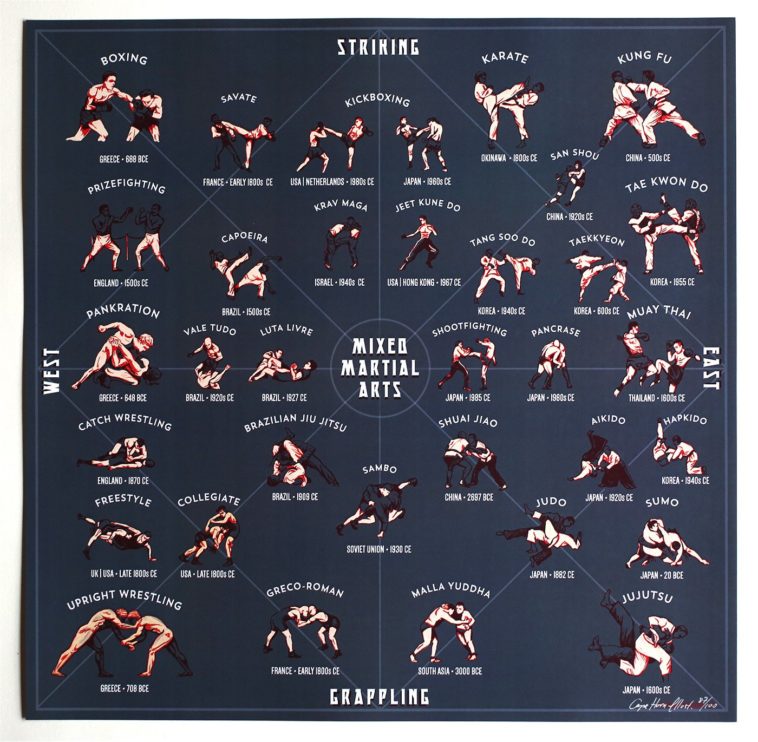The Background And Ideology Of Martial Arts: A Deep Dive
The Background And Ideology Of Martial Arts: A Deep Dive
Blog Article
Material Created By-Lauridsen Martin
Step into the old world where martial arts were substantiated of necessity in varied regions. Cultures crafted one-of-a-kind fighting styles intertwined with historical contexts. Methods progressed over centuries via committed method and cultural exchanges. Today, contemporary martial arts mix standard elements for optimal effectiveness. Philosophically, martial arts stress technique, self-improvement, and consistency. Regard, humility, and equilibrium are fundamental concepts assisting specialists in the direction of development and resilience. Check out the midsts of this abundant history and viewpoint to uncover the extensive influences forming this long-lasting self-control.
Beginnings of Martial Arts
Martial arts came from numerous areas around the globe, developing as useful combat systems to resist risks. These old battling styles were created out of necessity, with each culture crafting methods matched to their distinct settings and difficulties. From the grappling arts of Jujutsu in Japan to the striking strategies of Martial art in China, martial arts were deeply linked with the historic, social, and social fabric of their particular societies.
In Japan, the samurai class polished martial arts like Kenjutsu, the art of the sword, which later progressed right into the much more promoted form of Kendo. At the same time, in Brazil, Capoeira emerged as a blend of dance and combat, created by enslaved Africans as a method to withstand injustice. Each fighting style lugs with it an abundant background and viewpoint, reflecting the worths and beliefs of individuals who exercised them.
As you look into the beginnings of martial arts, you discover a tapestry of human resourcefulness, durability, and the unrelenting spirit of warriors throughout time.
Evolution of Strategies
Through centuries of technique and refinement, battle techniques within various martial arts have actually gone through an extensive evolution. From old designs like Kung Fu and Karate to a lot more modern techniques such as Brazilian Jiu-Jitsu and Krav Maga, the development of strategies has been driven by a mix of social influences, useful applications, and technical improvements.
One substantial aspect of this evolution is the cross-pollination of strategies in between various martial arts. For example, techniques from traditional Japanese Jiu-Jitsu were incorporated into the production of Judo by Jigoro Kano in the late 19th century. https://cashhmsxb.bloggactif.com/32108296/children-martial-arts-instilling-self-confidence-and-character-advancement-from-a-young-age of designs has led to the advancement of crossbreed martial arts like Mixed Martial Arts (MMA), which integrate elements of striking, grappling, and submission techniques.
Additionally, the advancement of methods has actually been formed by the increasing emphasis on effectiveness and performance in battle. Professionals have continuously sought to refine their strategies through strenuous training, testing, and competitors, bring about the advancement of extremely specialized and efficient combating designs. Overall, the evolution of techniques in martial arts reflects the vibrant nature of fight and the recurring pursuit for enhancement and development.
Philosophical Foundations
Exploring the underlying philosophical concepts of martial arts offers insight into their core values and leading ideas. At the heart of lots of martial arts self-controls is the concept of discipline itself. By training your mind and body to act as one natural system, you cultivate discipline that extends past the dojo or gym right into daily life. This discipline includes regard, humbleness, and self-discipline, forming not simply your physical capabilities however likewise your personality.
Another essential philosophical foundation in martial arts is the idea of continual self-improvement. The journey of mastering a fighting style is endless, with practitioners constantly aiming to better themselves, both literally and mentally. This focus on growth fosters durability, perseverance, and a development mindset that can be put on all facets of life.
Moreover, martial arts highlight the value of consistency and balance. https://www.lascrucesbulletin.com/stories/martial-arts-come-to-mesilla-valley-mall-free-self-defense-classes-for-women,8354 are made to make use of an opponent's energy against them, highlighting the principle of yielding and rerouting pressure instead of meeting it head-on. This viewpoint includes social relationships, promoting calm resolutions and mutual understanding. By embracing these philosophical foundations, martial musicians not just boost their battle abilities but likewise grow a way of living fixated individual growth, respect, and consistency.
Conclusion
In conclusion, the history and viewpoint of martial arts supply a rich tapestry of custom, discipline, and self-improvement.
Take for https://martial-arts-kids-arnis-n33221.blog2news.com/31716030/a-research-study-of-diverse-martial-arts-forms-ranging-from-martial-art-to-karate of Bruce Lee, who revolutionized martial arts by mixing different styles and ideologies to develop his very own one-of-a-kind type of Jeet Kune Do.
With devotion and innovation, martial artists continue to push boundaries and inspire others to reach their complete potential both in combat and in life.
